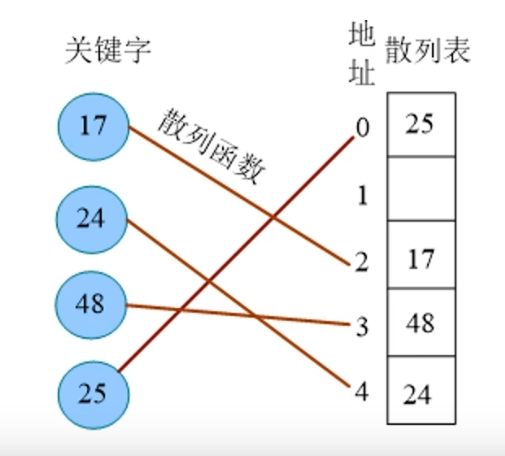📈 Hash Table
📈 Hash Table
Hash Table: A abstract data structure that maps keys and values.

Hash Function: A hash function is any function that can be used to map data of arbitrary size to fixed-size values (used for storage address), namely
- Hash function should be simple, to reduce the calculating time consumption.
- Hash function should be uniform,to avoid multiple values being mapped near the same address, and generating more hash collision.
Hash Collision: When two distinct pieces of data in a hash table share the same hash value. The hash value in this case is derived from a hash function which takes a data input and returns a fixed length of bits.(From Wikipedia)
Common Hash Functions
Direct addressing method
Applications: Key distribution should be known. And the collection of the keys is greatly consecutive and not have a concentrated distribution.
Modulo method(取模)
is a prime number which is less than the length of the hash table.
Applications: Without knowing the distribution of the keys.
Why p should be a prime number less than the length of the hash table?
Modulo calculation can map the hash code into the interval between 0 and .
should be a prime number to avoid collision as much as possible.
If the is bigger than the length of the hash table, the hash table will overflow. We suppose that the length of the hash table is 15. If the %p% equals to 17, the key whose hash code is 16 can't find a appropriate postion to input.
Hash Collision
Open addressing method
Open addresssing method is a solution in the linear storage. When the collision happens, this method will detect other available locations, rather than creating a new storage.
is the detection function, and is the length of the hash table.
- linear detection
- Double detection
Jump back and forth! But the detection failure may be occur.
Chaining
If different keys have the same hash code, they are synonyms for each other. The Chaining method stores synonyms in a linked list under the same address. Search, delete, and insert are implemented in this linked list.
